Geoscience Reference
In-Depth Information
Table 19.1
Absorption band parameters for
Q
S
Radius (km)
Depth (km)
τ
1
(s)
Q
s
(min) (
τ
1
)
Q
s
(100 s)
τ
2
/τ
1
α
1230
5141
0.14
2.43
35
1000
0.15
3484
2887
—
—
—
—
—
4049
2322
0.0025
10
5
80
92
0.15
4832
1539
25.2
10
5
80
366
0.15
5700
671
12.6
10
5
80
353
0.15
5950
421
0.0031
10
5
80
330
0.15
6121
250
0.0009
10
5
80
95
0.15
6360
11
0.0044
10
5
80
90
0.15
6371
0
0
500
500
0
∞
Q
m
=
80
10,000
100
Q
+
100
+
1000
300
Q
−
1
10
−
2
10
−
3
10
−
4
+
10,000
1000
500
D”
100
Depth
=
1000 km
1
10
100
1000
Period (s)
1800
Fig. 19.7
Q
S
as a function of period for the mantle and
inner core for ABM. Note the similarity of the upper mantle
and the lowermost mantle (D). These may be thermal
(high-temperature gradient) and mechanical (high-stress)
boundary layers associated with mantle convection
(Anderson and Given, 1982).
2500
SEISMIC BAND
10
−
6
10
−
4
10
−
2
10
0
10
2
10
4
10
6
10
8
10
10
Period (s)
TIDES
CHANDLER
WOBBLE
assumed, the shape of the band (its width and
height) varies with temperature and pressure.
The parameters of the absorption bands are given
in Table 19.1. The locations of the bands as a func-
tion of depth are shown in Figures 19.5 through
19.7. I refer to the absorption-band model as ABM.
The variation of
the characteristic times
with
depth in the mantle is shown in Figure 19.5.
Note that both decrease with depth in the upper-
most mantle. This is expected in regions of steep
thermal gradient. They increase slightly below
250 km and abruptly at 400 km. No abrupt
change occurs at 670 km. Apparently, a steep
Fig. 19.6
The location of the absorption band for
Q
S
as a
function of depth in the mantle (Anderson and Given, 1982).
are fixed. By assuming that the characteristics of
theabsorptionbandareinvariantwithdepth,
we are assuming that the width of the band is
controlled by a distribution of characteristic
relaxation times rather than a distribution of
activation energies. Although this assumption
can be defended, to some extent it has been
introduced to reduce the number of model
parameters. If a range of activation energies is




























